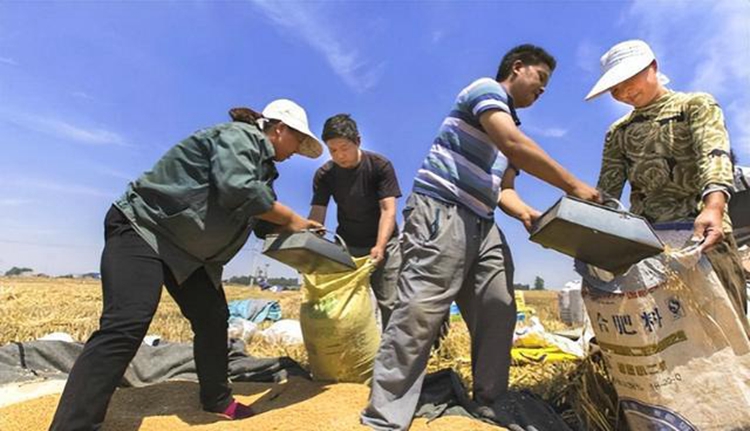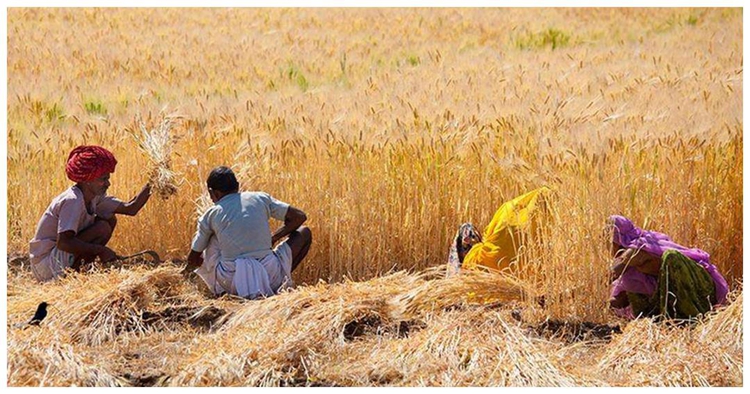The Nihon Keizai Shimbun website published an article entitled "India will become the center of global food consumption" on July 9, written by Toshi Shimoda, editorial board member of the newspaper, excerpts of which are as follows:
The protagonist of the world food consumption market will change from China to India. The Food and Agriculture Organization of the United Nations and the Organization for Economic Co-operation and Development predict that China's pulling role in world food consumption will diminish in the next 10 years, while India's influence will increase. Changes in eating habits in emerging market countries and developing countries are likely to play a decisive role in future food supply and demand.
The Agricultural Outlook 2024-2033, recently released by the Food and Agriculture Organization of the United Nations (FAO) and other organizations, states that global consumption of agricultural products, including feed, will grow at an annual rate of 1.1 percent. "Ninety-four percent of the incremental demand will come from emerging market countries such as India, Africa, Southeast Asia and developing countries," analyzed a senior economist at the FAO's Markets and Trade Department.
The biggest change will be the change in consumption from China to India. China has accounted for 28% of the incremental global demand for agricultural and fishery products over the past 10 years (2014 to 2023). But over the next 10 years (2024 to 2033), this will drop dramatically to 11%. India's share of global demand for agricultural and fishery products will expand from 13% to 20%. The share of Saharan (sub-Saharan) Africa, where the population continues to grow, will also increase from 10 to 18 per cent.

In terms of consumption of staple foods, a significant turnover of protagonists is expected. China's wheat consumption is projected to be 147 million tons in 2033, which, while it will remain the world's largest consumer, will grow by only 2.6 percent compared to the average of 2021 to 2023. India's consumption, on the other hand, will grow by 27.7% to 137 million tons, close to China's level. In the case of rice, China's consumption will remain unchanged, but India's is expected to jump 22.8%.
China's "overeating" will no longer exist because its population will decrease. In contrast, FAO and others believe that India's urban-centered population will grow in size and living standards will rise.
What is difficult to predict are changes in eating habits. Both China and India's populations are now comparable in size at more than 1.4 billion. average meat consumption from 2021 to 2023 will be about 99 million tons in China and 7.9 million tons in India, only one-twelfth of the former. Although there are differences in food cultures between the two countries, in general, the higher the income, the greater the meat consumption, which increases with economic growth. Due to India's large vegetarian population, FAO and other organizations have made a low estimate of the country's future meat consumption, but if the country's dietary habits change due to reasons such as rising incomes, global food supply and demand trends, including feed grains, will be greatly affected.
Food consumption in emerging market and developing countries will undoubtedly expand over the next 10 years. Wheat consumption in developed countries is projected to grow by 3.8 percent and beef consumption by 1.7 percent, while wheat consumption in emerging market and developing countries will increase significantly by 15 to 17 percent. By 2033, Africa's population will increase from the current 1.49 billion to 1.8 billion, and consumption of staple foods such as wheat, maize, and rice alone can be expected to surge by 22% to 42%.
Along with population increases and income growth, emerging market and developing countries have a growing demand for food. Can this problem be properly addressed? Disruptions in the supply chain due to geopolitical tensions and the spread of plant and animal infectious diseases create many uncertainties in the stable supply of food. The greatest risk is the high incidence of unusual weather conditions due to climate change, which causes huge losses to agriculture.

Based on the latest data, the European Environment Agency analyzed that following the historic heat wave in 2023, there is also a possibility of frequent heat waves and mountain fires in 2024, and warned that "productivity in agriculture is declining as a result of climate change, with heatwaves, droughts and torrential rains becoming more intense and more frequent."
It is also projected that by mid-century, about 10 per cent of agricultural land suitable for staple crop production and livestock will be unusable due to climate change.
FAO and others have suggested that reducing food losses by the equivalent of one third of crop production is an effective approach in the quest for a stable food supply. If food losses in retail outlets and households could be reduced by half by 2030, food intake in low-income and lower-middle-income countries would increase by 10 percent and 6 percent, respectively, through lower food prices.
Because China consumes large quantities of beef, tuna, cooking oil, etc., the Japanese are feeling the effects of rising food prices. With economic growth and rising incomes, the increase in food demand will be unstoppable if other emerging market countries and developing countries become increasingly hungry for food. If that is the case, it will be important to establish, as early as possible, sustainable food systems that can withstand the impact of increasing climate change, including measures to cope with food depletion.

